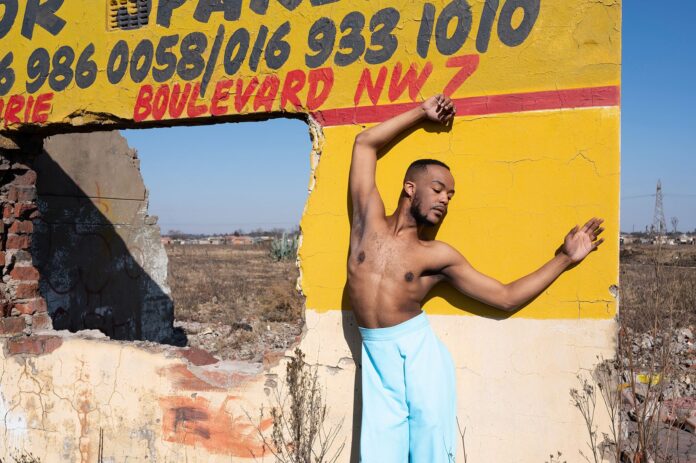
By Francesca Perry, CNN
(CNN) — Recent headlines from South Africa have reported national crises, from rolling blackouts to the highest unemployment rate in the world and housing shortages. But a new photography exhibition shines a spotlight on the rich landscape of innovation and contemporary culture led by young people in the country.
In “A Young South Africa,” (at the NOW Gallery in London until November 19), work from six photographers and creatives document the diversity of style, talent and thriving subculture among the “Ama2000s”, the South African term for Generation Z. But it also showcases the evolving cultural identity of a country that is itself young.
“We’re only 29 years of a democracy,” explained Karabo Mooki, one of the featured photographers, over video call. “It’s such a young culture.” Mooki’s series on show, “Island Gals,” documents a skateboarding community of young Black women in his hometown of Johannesburg. Established by 21-year-old skater Thato Moet, Island Gals provides a “safe space” for girls to come together and skate, explained Mooki.
As a skateboarder himself, he had been aware of “the heavily dominant male cis environment” of skateboarding and wanted to give visibility to the growing community of Black women represented by Island Gals. “I felt there was a need to bring truth to light, documenting the evolution of the (skateboarding) culture, the narrative that has not been celebrated by mainstream media,” he said.
Mooki’s richly saturated portraits catch the skaters in still moments of connection, in parks, on streets, and other public spaces of the city where women too often face harassment and violence. Each image is accompanied by the woman’s story, as told to Mooki — from struggles with mental health to standing up to sexist stereotypes in skateboarding. “Black women are often boxed up in society’s preconceived stereotypes,” he said. “I wanted to celebrate the beauty of this community and the boundaries that Island Gals is pushing.”
Mooki, who has also documented the Black punk scene in the city’s township of Soweto, as well as other local skateboarding groups, believes that “community is a cornerstone of Johannesburg’s youth culture.”
In the photo series “Afrogrunge”, 26-year-old designer and creative director Anita Hlazo, along with photographer Luxolo Witvoet, take us to the townships of Langa and Nyanga in Cape Town. As a teenager, Hlazo harnessed her own style — mixing pop and grunge influences with studs, piercings, platform boots and second-hand clothes — to create the fashion label Afrogrunge.
She described the style to CNN over email as “a combination of culture and subculture,” mixing inspirations from around the globe, and dressing in a way that is “foreign within our daily, cultural norm.” Afrogrunge, Hlazo said, shows that “youth culture in South Africa is aware of the global world, and if we don’t manage to come for it, we bring it here and enjoy it for ourselves.”
The photographs on show explore the experience of being an “Afrogrunge girl,” featuring young women expressing themselves through alternative fashion and style, often in stark contrast to everyday urban surroundings.
The photographer Fede Kortez, meanwhile, celebrates the aesthetics and identity of two other Cape Town neighborhoods — Bo-Kaap, a historical center of Cape Malay culture known for its colorfully painted houses, and Woodstock, acclaimed for its art scene — as well as the young people living there.
Portraits on show from Johannesburg-based Nikki Zakkas capture young people across South Africa gaining recognition for their talent, from musicians and football players to ballet dancers. “My aim was to showcase individuals who embody diverse facets of contemporary youth culture,” the photographer told CNN, explaining that she collaborated with her subjects to portray them “as they envisioned themselves.”
Zakkas photographs the young creatives in places that have significant personal resonance: 24-year-old ballet and contemporary dancer Bhungane Mehlomakulu is captured in Sasolburg, where he grew up and discovered his passion for dance; indie musician Red Robyn is photographed at a shuttered beachfront amusement park in her home city of Durban.
In the series “Back to the Soil,” Johannesburg-based creative director Bee Diamondhead worked with photographer Travys Owen to portray three queer male musicians making waves in South Africa: Desire Marea, Muneyi and Thuthuka Sibisi. The images show the men nude, painted with clay and earth, with their poses resembling classical figurative sculptures. The portraits meditate on the musician’s beauty, tenderness, care and vulnerability, as a direct counterbalance to the notion of toxic masculinity.
With “My Liewe Land (My Great Land)”, photographer Aart Verrips celebrates South Africa’s youth-led subcultures through vibrant, multicolored silhouette portraits. Featuring young people innovating in music, fashion and performance, including the local Amapiano music subgenre and voguing nights, Verrips uses his photography to turn them into iconic figures.
The rising global popularity of Amapiano music, which emerged in South Africa in the mid-2010s, was one of the catalysts for the exhibition. “South African music at the moment is having a real resurgence, especially through the lens of Amapiano, and a lot of young people are connecting with the culture that way,” said NOW Gallery’s curator Kaia Charles, walking around the show. “We thought it would be good to expand out the conversation.”
Charles, who once lived in Cape Town, praises the “resilience” of these young creatives, especially considering the challenges – the high cost of living, education and unreliable basic services – which they are faced with. “From a creative industries point of view, South Africa is so avant garde, and I don’t think a lot of people know that,” she said. “I’m hoping through this show that people get to understand the wealth of talent that exists there.”
The-CNN-Wire
™ & © 2023 Cable News Network, Inc., a Warner Bros. Discovery Company. All rights reserved.


